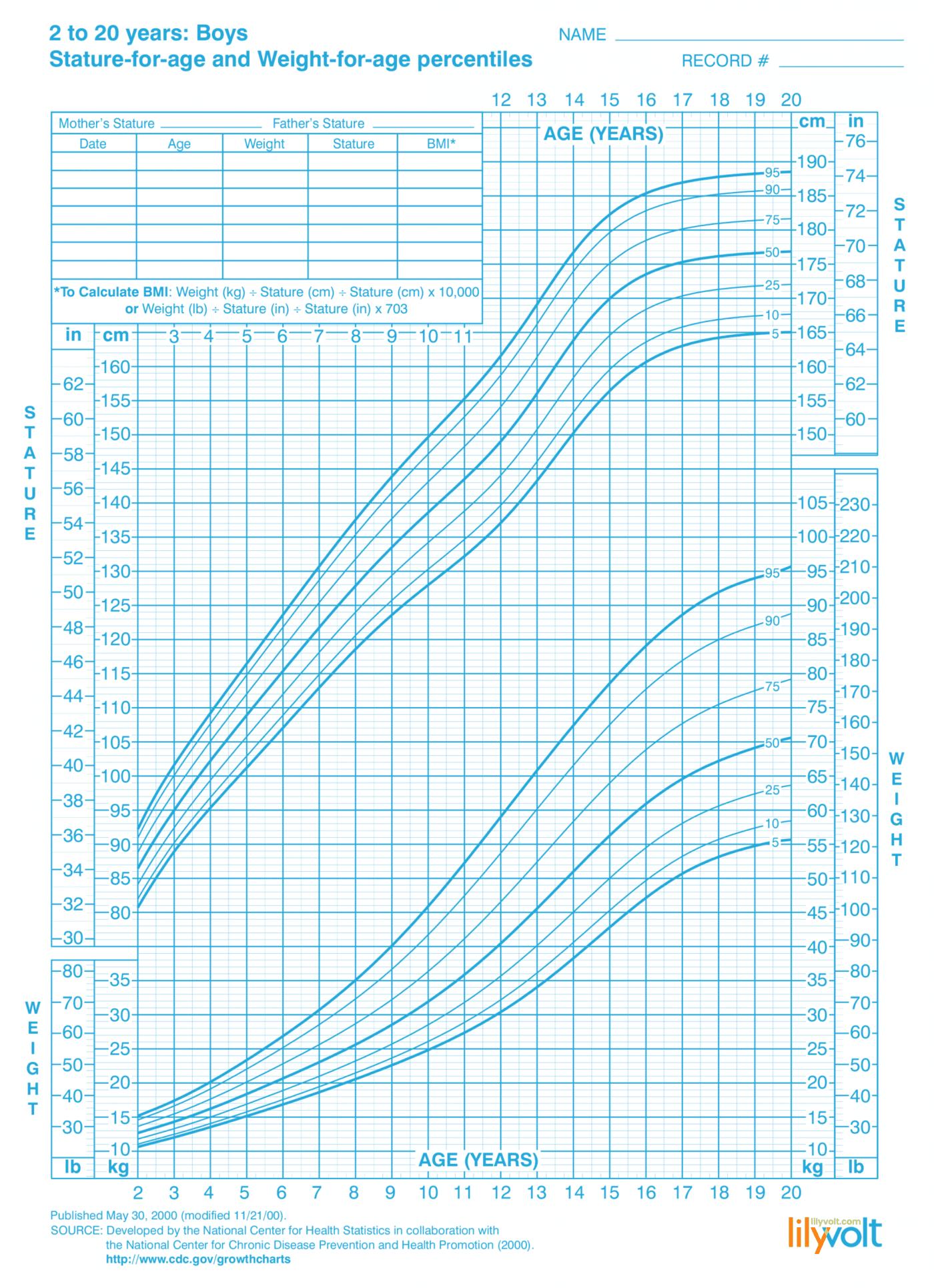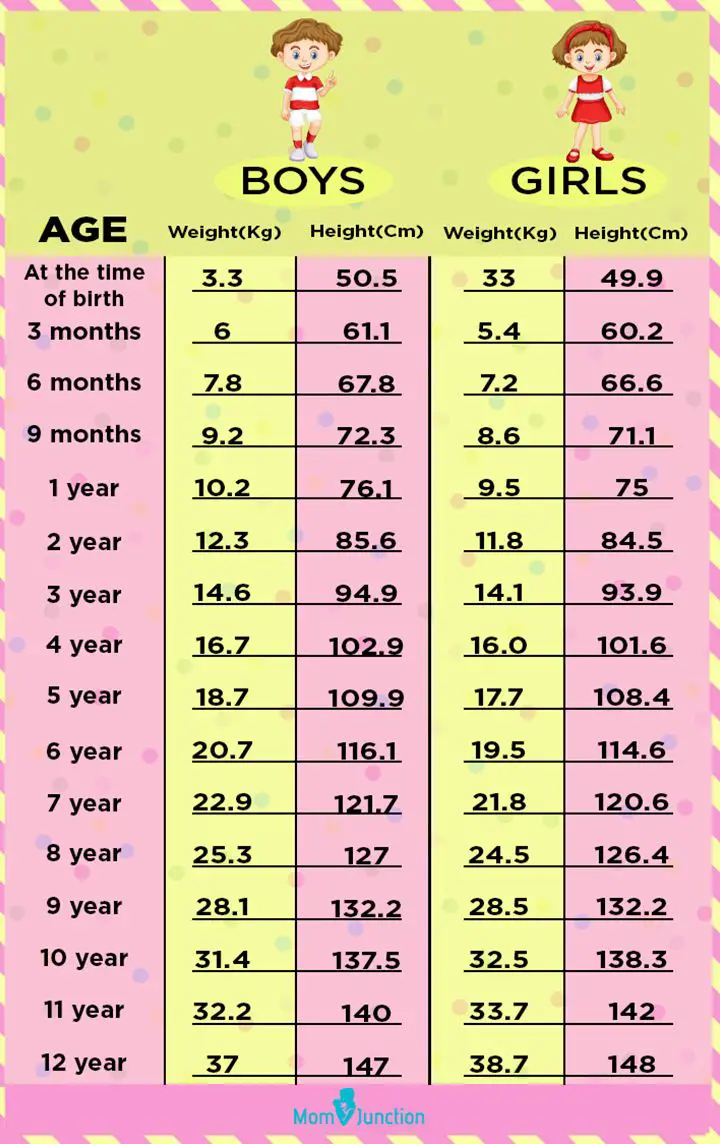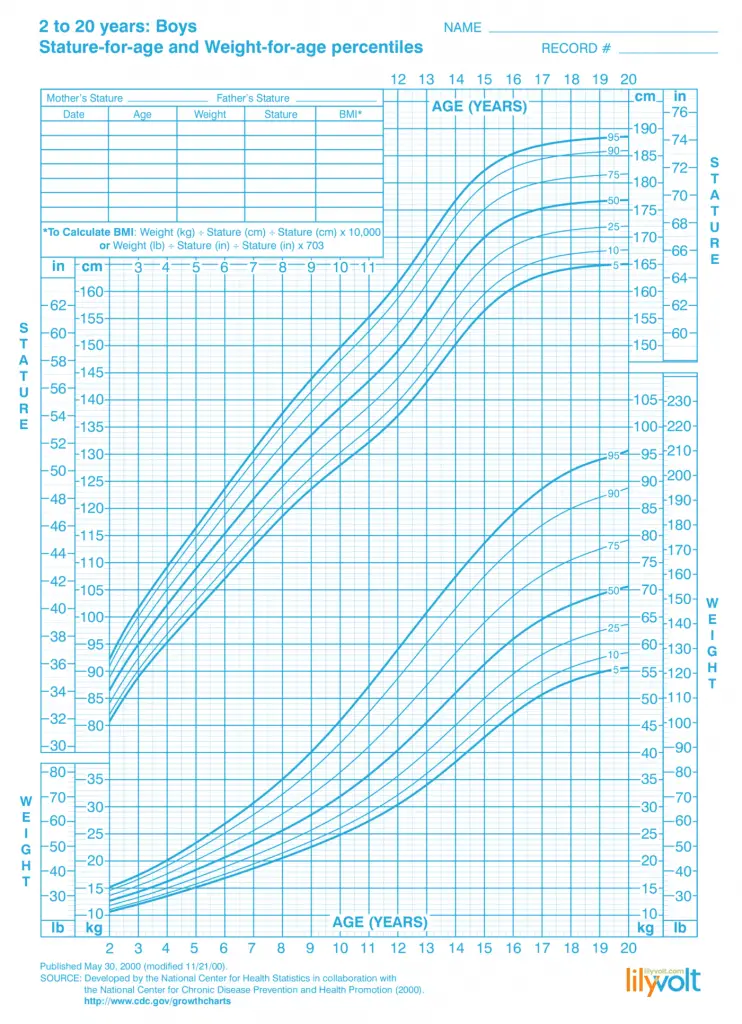A boy weight height chart is a helpful tool for parents and caregivers to measure a child’s growth. It shows the weight and height of a child in comparison to the expected weight and height of a child of the same age and sex. This chart helps to identify if a child is growing at a normal or abnormal rate. A pediatrician can use the chart to compare a child’s growth rate with the national averages. The chart can also help parents and caregivers to identify potential problems, such as underweight or overweight issues, growth disorders, and other medical problems that could affect a child’s growth.
It is important to track a child’s growth, as it can indicate their overall health. The chart is divided into age groups and sex categories. Each group has its own set of standards and expectations for a child’s growth. It is important to consider a child’s age and sex when referring to the boy weight height chart. In addition to tracking a child’s growth, the boy weight height chart can also be used to monitor a child’s diet and activity level. A child’s diet and activity level can have a major impact on their growth, so tracking these variables can help parents and caregivers ensure that their child is healthy and growing properly. It is important to remember that the boy weight height chart is only a tool and should not be used as an absolute indicator of a child’s health and growth. For a more accurate assessment, it is important to consult a pediatrician for further evaluation.
height weight charts for boys

Height weight charts for boys are an essential tool for tracking a boy’s physical growth over time. These charts provide a visual representation of the boy’s body size and weight, allowing parents and healthcare professionals to identify any potential health issues or growth anomalies. The chart is typically divided into percentile lines, which represent a comparison of the boy’s current height and weight against the average for his age. If the boy falls outside of the expected range, he may need further medical attention or dietary changes to ensure healthy growth. Most charts are divided into two sections: the height section, which measures the boy’s height in inches or centimeters, and the weight section, which measures the boy’s weight in kilograms or pounds.
The chart also includes additional information such as the boy’s age, gender and body mass index (BMI). It’s important to note that the height weight chart for boys should only be used as a rough guide, as there are a number of factors that can affect a boy’s growth and development. A qualified doctor should always be consulted to provide a more accurate assessment. By regularly checking a boy’s height and weight against the chart, parents and healthcare professionals can quickly identify any potential health concerns and take action to ensure the boy is growing up healthy and strong.
What is the average weight and height for a 11-year-old boy?
The average weight and height of an 11-year-old boy can vary significantly depending on the individual’s height and body composition. However, according to the Centers for Disease Control and Prevention (CDC), the 50th percentile for an 11-year-old boy’s weight is 64.6 pounds. At the 50th percentile, 50% of boys of the same age and within the same country are heavier, and 50% are lighter. For height, the 50th percentile for an 11-year-old boy is 58.2 inches, which is equivalent to 4 feet 10 inches. This means that 50% of boys of the same age and within the same country are taller and 50% are shorter.
There is a wide range of what is considered healthy for an 11-year-old boy, and it is important to consult a healthcare provider for an individualized assessment. Weight and height charts are available to help identify a boy’s BMI, or body mass index. A healthy BMI can range from 18.5 to 24.9. It is important to remember that all children develop at different rates and that there is no “one size fits all” when it comes to weight and height. While the CDC provides a general guideline, parents should always consult a health professional for an individualized assessment.
What is the average growth rate for boys?
This chart is used to track the growth of boys over time, and the rate of growth can vary from boy to boy. However, the average growth rate for boys is a useful way of judging the typical growth rate of boys in a certain age range. The average growth rate for boys can be calculated by taking into account the height, weight, and age of a boy and comparing it to the average values for a given age range. This allows for a more accurate assessment of the average growth rate for boys. Typically, boys experience a rapid growth spurt during puberty, with the average growth rate for boys during this time being more than double the growth rate seen in the years leading up to puberty.
This is followed by a period of slower growth, with the average growth rate for boys slowing down to a more moderate rate over time. The average growth rate for boys also changes depending on a variety of factors, including genetics, diet, and lifestyle. Boys that are well-nourished, have an active lifestyle, and have healthy genes tend to experience a higher average growth rate than boys that do not have these benefits. Overall, understanding the average growth rate for boys is important for tracking growth over time and providing a general indication of typical growth rates for boys within a certain age range.
childs height and weight chart

It can help to determine whether a child is developing normally, or whether they may need medical intervention. The chart is typically divided into four areas: height, weight, BMI (body mass index), and age range. It will provide a range for each age and gender and can be used to compare a child’s growth to the average range for their age group. Tracking a boy’s weight and height over time is essential to ensure they are developing normally. In order to measure weight, a digital scale or a doctor’s visit is usually necessary.
Height is usually measured with a wall-mounted stadiometer. A boy weight height chart can also be used to track changes in body mass index (BMI), which is a useful indicator of overall health. BMI takes into account both height and weight to create a more accurate assessment of a child’s health. It’s important to remember that each child is unique and that there is no one-size-fits-all approach when it comes to their growth. While the chart can be a useful tool for tracking overall health and development, parents should also speak to their child’s pediatrician or healthcare provider for advice about their individual needs.
What percentile is my child for height and weight?
If you are wondering what percentile your child is for height and weight, a boy weight height chart can be a useful tool. It can give you a good indication of how your child compares to the average for their age. The chart will show you percentiles for height, weight and BMI. You can look up your child’s age and then find their height, weight or BMI on the chart. The percentile shows how your child compares to other children of their same age.
For example, if your child is at the 50th percentile for height, this means that they are taller than 50% of other children their age. If your child is at the 75th percentile for weight, this means that they weigh more than 75% of other children their age. It’s important to keep in mind that these charts are only an estimation of where your child should be. Your child may be above or below their expected percentile. If you are concerned about your child’s growth, it’s a good idea to talk to your doctor. A boy weight height chart can be a useful tool for monitoring your child’s growth and development. By comparing your child’s height, weight and BMI to the average for their age, you can get a better idea of how your child is doing.
How do you calculate the height of a child?
Calculating the height of a child can be done by using a boy weight height chart. This chart is a visual representation of the average height for a certain age and weight for boys. To calculate the height of a child, first measure their weight and then find the corresponding height on the chart. The chart typically lists the average heights and weights for boys starting from two years old up to adulthood. The heights are usually divided into percentiles, allowing the child’s height to be determined according to the percentile they fall into.
When using the chart, it is important to be aware that the heights given are averages and not specific to each child. Therefore, it is important to measure each child’s height and weight using a measuring tape or scales to ensure accuracy. It is also important to note that boy weight height charts can vary between different countries and cultures. Therefore, when calculating a child’s height, it is important to use the chart specific to their country or region. Overall, boy weight height charts are a useful tool for calculating the average height of a child. By measuring the weight and locating the corresponding height on the chart, a child’s approximate height can be determined quickly and easily.
What is the normal height and weight of a child?
A boy weight height chart is used to assess the normal growth and development of a child. It also helps to determine whether a child is growing in a healthy manner. The chart lists the average height and weight of a boy at different ages. Generally, a newborn baby boy will weigh between 2.5 and 3.5 kilograms, and have a length of between 47 and 53 cm. During the first year, a baby will gain an average of 5 to 6 kilograms, and the average height increases to around 71 cm.
From one year to six years, a child will gain an average of 5 to 6 kilograms per year, and grow around 5 cm every year. At six years old, a boy is usually between 102 and 110 cm in height and weighs around 18 kg. At puberty, a boy’s growth rate increases rapidly, and he can gain up to 11 kg every year. By the time he is 18 years old, the average weight for a male is around 73 kg and the average height is around 176 cm.
What is the average height for children?
The average height for children varies according to age and gender. Generally, the average height for boys is slightly higher than that of girls. For example, the average height of a 12-year-old boy is 61.7 inches. This can be seen on a boy weight height chart. The average height range for children is usually between 45-59 inches.
This range can also be seen on a boy weight height chart. Children between the ages of 2-5 usually have an average height of around 34-41 inches. As they age, they tend to gain height at a rate of 2.5 inches per year. It is important to remember that there is no single correct height for all children. Each child will grow and develop at their own rate. Some children may be taller, while others may be shorter than the average height given in the chart. It is important to monitor your child’s growth and development. Your doctor can also provide helpful advice on how to ensure your child is growing at a healthy rate. If you have any concerns, it’s best to consult with a doctor or health care provider. Overall, the average height for children can be found on a boy weight height chart. This can provide a helpful starting point in understanding your child’s growth and development. However, it is important to remember that each child is unique and will develop at their own rate.







